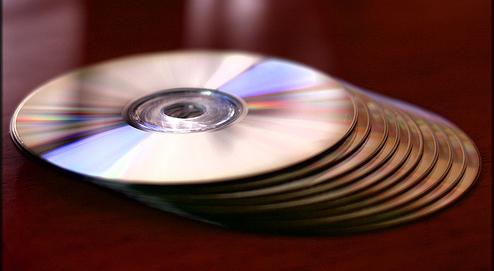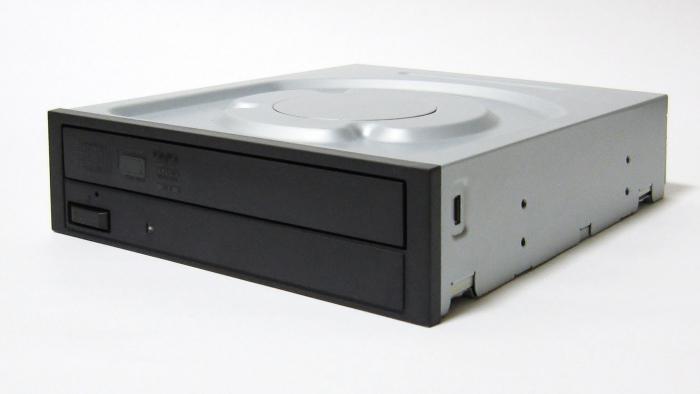Despite the high reliability of modern computing systems, the forums often ask questions: “Why does the computer not see the drive? What to do? ”Perhaps this problem will exist until such devices are finally pushed into the background of the history by more technological solutions.
Picking up a screwdriver ...
Every user who is faced with a situation where the computer does not see the drive must realize that he is far from the first. There is a high probability that there is nothing catastrophic in such a breakdown; PC performance can be easily restored. According to statistics, only a small part of those whose computer stopped seeing the drive were forced to seek help from service centers or spend money on a new device. Most managed to fix the breakdown on their own in 10-15 minutes. It is important to remember that panic and negative attitudes are the worst helpers. Do not forget about the need to work with a motherboard using the current version of BIOS. This firmware can be downloaded from the board manufacturer’s website and flashed using a special application.
Breakdown philosophy
The reasons why the computer does not see the drive are divided into two categories: hardware and software. To troubleshoot the first type, you must have access to the inside of the system unit. Of course, if it is sealed with a warranty sticker, you will have to use the services of a service center. Often there are software failures caused by the failure of control applications: they can and should be fixed in any case. Let's start with the second.
Allowed Channel
The vast majority of modern drives work out of the box, that is, the user only needs to purchase the device, place it inside the system unit (in the case of the classic version) and connect two lines to it: power supply and interface cable. After loading the operating system, the new component will be automatically recognized, drivers are installed on it and access is open. But sometimes a simple connection is not enough, and the system does not even see the fact of connecting new equipment. In this case, a frustrated user contacts the support service with the question “why does the PC not see the drive”.

And the reason for the failure can be incompatible BIOS settings of the computer. To restore functionality in this case, it is necessary to immediately press the Del button immediately after applying power, which will lead to the launch of the configuration utility for the motherboard. Here the user needs to find the information window (usually "Main"), where the detected disk devices are indicated. If the drive name is not listed, then you need to go to the Storage Configuration section and set all ports to Enable, then proceed to the Exit Option and save the changes. Each device is connected to its port, respectively, if the use of the channel is prohibited, then detection will be impossible. Therefore, if the computer does not see the DVD drive, then be sure to make sure that this BIOS option is not prohibited.
AHCI or IDE
Sometimes the drive is in the list of detected BIOS devices, but it is not in the operating system. In this case, the cause of the failure may be an unsupported mode of operation of the channel. In the "Main" section there is an item "SATA Mode", which can be set to IDE or AHCI mode. For the absence of failures, it is necessary that the motherboard fully supports the new equipment, otherwise work is possible only with a number of restrictions. In particular, if the computer does not see the drive, then you can try switching SATA Mode to another mode. Please note that after this, you may need to reinstall the operating system.
Summing up the software failures, we can say that with such problems the most important thing is to carefully check the BIOS settings and set the correct parameters. A cardinal solution is to reset all settings to the factory state. This can be done either by closing two pins-contacts on the motherboard (their location is indicated in the instructions), or by activating the Load Optimized Defaults item in the BIOS.
Port mismatch

All modern drives are designed to work with the SATA interface. Obsolete PATA is almost never found, and USB is the prerogative of external solutions. Although motherboards have also supported a serial bus for a long time even at the chipset level, and therefore there shouldn’t be any problems, many owners of new computing systems, as once upon a time, are wondering “why does the computer not see the drive”. So, sometimes connecting the SATA connectors on the mainboard and the device using the appropriate cable may not lead to the desired result. And everything is explained simply: two types of SATA ports are currently installed on modern motherboards: the second and third versions. Many operating systems cannot install a newer standard without installing an additional driver, hence the problem. If the user connects the SATA-2 drive to the version 3 port, but does not install the management software package, then operation is not guaranteed. This is despite the fact that the developers declared compatibility "from top to bottom." In practice, this is only partially true. Thus, if the computer does not see the drive, then you need to make sure that it is connected to the SATA2 port on the motherboard. If not, install drivers for SATA3.
Interface cable
At least one serial cable is always supplied with the motherboard. Usually it is used by the owner to communicate between the hard drive and the board, but for all other devices such a cable is purchased separately. The problem is that now various companies supply their products to the market - from eminent to little-known Chinese. Accordingly, the quality also varies. Even such a simple thing as a SATA cable can malfunction, adding gray hair to the wearer . Poor conductors inside the loop, insufficiently strong contact plates, violation at the soldering point: is it any wonder why the computer does not see the drive?
Necessity or excess?
Some SATA cables on the plugs contain special metal clamp strips, with which, after connecting to the connector, the possibility of spontaneous partial removal is minimized. But classical solutions that do not have such functionality, in some cases lose contact with the device, which raises the question "why the computer does not see the drive."
With such problems, it makes sense to replace the interface loop. Well, if it is without clamps, then this must be done. All self-respecting manufacturers know this nuance and put on the market a little more expensive, but reliable solutions.
Port malfunction
One of the common causes of drive failure is a SATA failure on the motherboard. It is not surprising, but if one of the connectors ceases to work normally, the neighboring ones often function without failures. Therefore, with such a breakdown, you need to open the system unit case, find the cable going from the device to the board and reconnect it to any other neighboring SATA. Note that this feature does not mean physical failure of the port, and the problem may be in the compatibility of the drive with the board.
Problem disk
And, finally, one of the most “popular” reasons why a long search begins for an answer to the question “why the computer does not see the drive” is an unreadable disk forgotten in the device. Perhaps, each owner of a computing system came across compacts that did not want to be read on this drive. When trying to open the disk, the drive buzzed, spun, braked and in every way refused to work with the sample. If you leave this problematic media in the drive when you turn on the computer, then after loading into the operating system, the device may not be available.